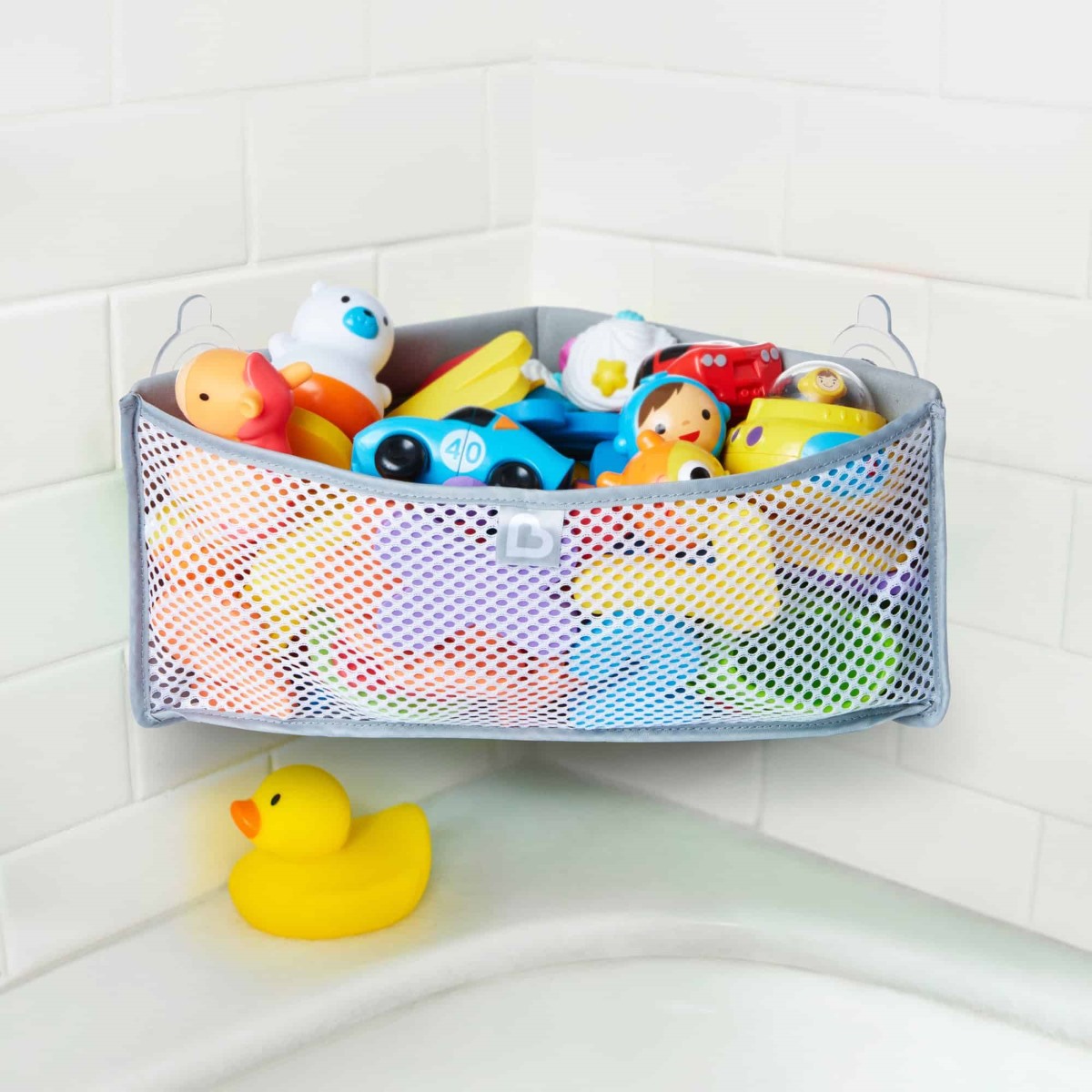

Articles
How To Bathe A Baby In The Sink
Modified: December 7, 2023
Learn the proper technique for bathing your baby in the sink with our step-by-step guide. Find helpful articles on bathing newborns and ensure a safe and enjoyable experience for your little one.
(Many of the links in this article redirect to a specific reviewed product. Your purchase of these products through affiliate links helps to generate commission for Storables.com, at no extra cost. Learn more)
Introduction
Welcoming a new baby into your life is an exciting and joyous occasion. And one of the many tasks that come with taking care of a baby is bathing them. Giving your baby a bath can be a bonding experience, a time to relax and promote their overall well-being. While there are various ways to bathe a baby, bathing them in a sink can be a practical and convenient option.
In this article, we will provide a step-by-step guide on how to bathe a baby in a sink. From preparing the sink to ensuring safety and handling the baby, we will cover all the essential information you need to know to make this experience smooth and enjoyable for both you and your little one.
Before we dive into the details, it’s important to note that safety should always be a top priority when bathing a baby. Never leave your baby unattended during bath time, even for a second. Now, let’s get started on preparing the sink for a comfortable and safe bathing experience!
Key Takeaways:
- Bathing your baby in the sink can be a safe, convenient, and enjoyable experience. Prioritize safety, gather supplies, and create a soothing environment for a seamless and relaxing bath time routine.
- Positioning and supporting your baby properly in the sink is crucial for their safety and comfort. Follow gentle washing techniques, prioritize safety, and cherish the bonding moments during bath time.
Read more: How To Bathe A Baby In The Bathtub
Preparing the Sink
Before you begin bathing your baby in the sink, it’s important to ensure that the sink is clean and safe. Follow these steps to prepare the sink:
- Clear the sink: Remove any items that may be in the sink, such as dishes or utensils. This will create a clean and clutter-free space for your baby’s bath.
- Adjust the water flow: Make sure the tap is set to a gentle and steady flow of warm water. Avoid hot water as it can cause burns to your baby’s delicate skin.
- Place a non-slip mat: To provide a secure surface for your baby, place a non-slip mat or a folded towel at the bottom of the sink. This will prevent your baby from slipping or sliding during the bath.
- Gather the bathing essentials: Have all the necessary items within reach, such as baby soap, shampoo, washcloths, and towels. This will make the bath time more efficient and enjoyable.
By taking these simple steps to prepare the sink, you can ensure that the bathing environment is clean, safe, and ready for your baby’s bath. Now, let’s move on to gathering the supplies you’ll need for the bath.
Gathering Supplies
Before you begin bathing your baby in the sink, it’s important to gather all the necessary supplies. Having everything within arm’s reach will ensure that you have a smooth and uninterrupted bathing experience. Here are the essential supplies you’ll need:
- Baby soap or cleanser: Choose a mild and gentle soap specifically formulated for babies. Avoid using harsh soaps or adult products, as they can be too harsh for your baby’s delicate skin.
- Baby shampoo: Just like with soap, opt for a gentle baby shampoo that is tear-free and designed for your baby’s delicate scalp.
- Soft washcloths: Have a few soft washcloths on hand to cleanse your baby’s body gently. Using a separate washcloth for the face can help prevent any potential irritation.
- Baby towels: Choose a couple of soft and absorbent baby towels to wrap your little one in after the bath. Hooded towels are especially helpful in keeping your baby warm and cozy.
- Baby lotion or oil: Once the bath is complete, you may choose to moisturize your baby’s skin with a gentle baby lotion or oil. This helps to keep their skin hydrated and soft.
- Baby comb or brush: If your baby has hair, have a soft baby comb or brush on hand to gently detangle their hair after the bath.
- Diaper and clean clothes: Prepare a clean diaper and comfortable clothes for your baby to wear after the bath.
By gathering these supplies in advance, you’ll have everything you need to make bath time a breeze. With the sink prepared and supplies at the ready, it’s time to ensure the safety of your little one during the bath. Let’s move on to the next step.
Ensuring Safety
As a parent or caregiver, ensuring the safety of your baby is paramount during bath time. Here are some important steps to follow:
- Never leave your baby unattended: It only takes a moment for an accident to occur, so never leave your baby alone during bath time. If you need to step away, even for a moment, always take your baby with you or ask another responsible adult to watch them.
- Keep one hand on your baby at all times: Always keep one hand on your baby as you bathe them. This provides support and helps to prevent them from slipping or sliding in the sink.
- Test the water temperature: Before placing your baby in the sink, test the water temperature with your elbow or the inside of your wrist. The water should be comfortably warm, around 37-38°C (98.6-100.4°F). If it feels too hot or too cold, adjust the temperature accordingly.
- Secure the sink area: Make sure the sink area is clear of any potentially hazardous items. This includes sharp objects, electrical appliances, and cords. Keep them out of reach to prevent accidents.
- Keep electrical appliances away: Avoid using electrical appliances, such as hairdryers or curling irons, near the sink. Water and electricity are a dangerous combination, so it’s best to keep these items far from the bathing area.
- Use non-slip mats or cushioned inserts: If your sink doesn’t have a non-slip mat or cushioned insert, consider using one. These help provide a secure surface for your baby and can prevent them from slipping or getting hurt.
By following these safety measures, you can create a secure and comfortable environment for your baby’s bath. Now that we’ve covered safety, let’s move on to adjusting the water temperature to ensure a pleasant bathing experience for your little one.
Adjusting Water Temperature
When bathing a baby in the sink, it’s crucial to ensure that the water temperature is safe and comfortable. Here are some steps to follow when adjusting the water temperature:
- Fill the sink with warm water: Start by filling the sink with warm water, making sure to cover only a few inches of the sink’s surface. This will provide enough water for the bath without overwhelming your baby.
- Check the water temperature: Before placing your baby in the sink, test the water temperature with your elbow or the inside of your wrist. The water should be comfortably warm, around 37-38°C (98.6-100.4°F). It should not feel too hot or too cold.
- Use a bath thermometer: If you prefer, you can use a bath thermometer to ensure the water temperature is accurate. The ideal temperature for a baby’s bath is between 37-38°C (98.6-100.4°F).
- Check the water temperature throughout the bath: As you bathe your baby, periodically check the water temperature to make sure it remains comfortable. You can do this by swirling the water gently with your hand and testing it against your skin.
- Adjust the water temperature if needed: If the water becomes too cool during the bath, you can add a little warm water to maintain a comfortable temperature. Likewise, if the water becomes too warm, you can add a small amount of cold water to cool it down.
Remember, the water temperature is crucial to ensure your baby’s comfort and safety during the bath. Taking the time to adjust the water temperature properly will help ensure a pleasant bathing experience for your little one. Now that we’ve covered water temperature, let’s move on to positioning the baby in the sink.
When bathing a baby in the sink, make sure to use a non-slip mat to prevent accidents, keep the water temperature around 100°F, and have all necessary supplies within reach. Always support the baby’s head and neck while bathing.
Read more: How To Wash Baby Bath Toys
Positioning the Baby
Positioning your baby properly in the sink is essential for their safety and comfort during bath time. Follow these steps to ensure the best positioning:
- Hold your baby securely: Before placing your baby in the sink, make sure to hold them securely. Cradle their head and neck with one hand and support their body with your other arm.
- Gently lower your baby into the sink: Slowly and gently lower your baby into the prepared sink, supporting their head and neck as you do so. Keep their back against your forearm, allowing them to sit comfortably in the water.
- Keep your baby’s head elevated: Position your baby with their head slightly elevated, ensuring that the water does not cover their face. This will help prevent water from getting into their nose or mouth.
- Ensure your baby’s shoulders are supported: Make sure your baby’s shoulders are well-supported by keeping your arm under their upper back. This will help them maintain a stable and secure position in the sink.
- Keep one hand on your baby at all times: Throughout the bath, keep one hand on your baby to provide support and stability. This will help prevent them from slipping or moving around too much.
Positioning your baby correctly in the sink is vital for their safety and comfort during bath time. By following these steps, you can create a secure and enjoyable bathing experience for your little one. Now, let’s move on to how to support your baby’s head and neck during the bath.
Supporting the Baby’s Head and Neck
Supporting your baby’s head and neck is crucial during bath time as they have limited control over their movements. Follow these steps to ensure proper support:
- Cradle your baby’s head with one hand: Place one hand under your baby’s head, using your forearm to cradle and support their neck. This will help keep their head stable and prevent any sudden movements.
- Keep your other hand free for bathing: By supporting your baby’s head with one hand, you can use your other hand to wash and gently clean their body. This allows you to focus on ensuring their safety while maintaining proper hygiene.
- Avoid excessive pressure or jerky movements: When handling your baby’s head and neck, use gentle and smooth motions. Avoid applying excessive pressure or making sudden jerky movements that may cause discomfort or injury.
- Be attentive to your baby’s cues: Pay close attention to any signals your baby gives during the bath. If they seem uncomfortable or show signs of distress, adjust your support accordingly and consider ending the bath if necessary.
By providing proper support to your baby’s head and neck, you can help ensure their safety and comfort during bath time. Now that you know how to support your baby, let’s move on to washing their body.
Washing the Baby’s Body
When it comes to washing your baby’s body during bath time, it’s important to follow a gentle and systematic approach. Here are the steps to properly wash your baby:
- Start with their face: Begin by using a soft washcloth dampened with warm water to gently clean your baby’s face. Use gentle strokes, starting from the forehead down to the chin, being careful around the eyes and mouth.
- Clean their neck and body: Proceed to clean your baby’s neck, arms, and body using a mild baby soap or cleanser. Lather up the soap in your hands and gently massage it onto their skin, paying attention to the folds and creases. Rinse thoroughly to remove any soap residue.
- Wash their bottom area: When washing your baby’s bottom area, use a clean washcloth and gentle strokes. Remember to clean in the folds and creases, being careful around the diaper area. Be thorough but gentle to prevent any irritation.
- Take care of their hair: If your baby has hair, wet their scalp and apply a small amount of baby shampoo. Using your fingertips, gently massage the shampoo into their hair and scalp to remove any dirt or oil. Rinse carefully to ensure no soap gets into their eyes.
- Finish with their limbs: Lastly, wash your baby’s legs and feet, making sure to clean in between the toes. Use gentle strokes and rinse thoroughly to remove any soap residue.
Throughout the bath, maintain a soothing and calm demeanor, talking to your baby and providing reassurance. Remember to always be gentle and attentive to their cues. By following these steps, you can ensure that your baby’s body is clean and fresh during bath time.
Once you have finished washing your baby, it’s time to move on to the next step: drying and dressing them. Let’s explore this in the following section.
Drying and Dressing the Baby
After bathing your baby, it’s important to dry them properly and dress them in clean and comfortable clothes. Follow these steps to ensure a smooth process:
- Pat dry gently: Use a soft and absorbent baby towel to pat your baby’s body dry. Start by gently patting their face, making sure to dry between the folds and creases. Continue to dry their body, paying attention to the neck, arms, and legs.
- Dry their hair: If your baby has hair, gently pat their scalp dry using a soft towel. Avoid rubbing vigorously, as this can cause discomfort or tangle their hair.
- Moisturize if desired: If you choose to use a baby lotion or oil, apply a small amount to your hands and gently massage it into your baby’s skin. This can help keep their skin moisturized and soft.
- Dress them in clean clothes: Once your baby is dried and moisturized, dress them in clean and comfortable clothes. Open snaps or buttons to avoid pulling anything over their head, as their neck is still delicate.
- Diaper them: Put on a fresh diaper, making sure it fits properly and is not too tight or too loose. Ensure that the diaper is positioned correctly to prevent leaks.
- Comb or brush their hair: If your baby has hair, use a soft baby comb or brush to gently detangle their hair. Start from the roots and work your way to the ends, being gentle and careful.
Throughout the drying and dressing process, maintain a calm and soothing environment. Talk to your baby softly and provide reassurance. This will help create a positive and enjoyable experience for them.
Now that your baby is clean, dry, and dressed, you have successfully completed bathing them in the sink. Remember to always prioritize their safety and comfort and adapt the process to suit your baby’s needs. Bath time can be a special bonding moment between you and your little one, so cherish these moments and enjoy watching them grow.
As a final reminder, never leave your baby unattended during bath time, and always keep a hand on them for support. With these precautions in place, you can continue to provide a safe and loving environment for every bath.
Happy bathing!
Read more: When Do Babies Use Bath Toys
Conclusion
Bathing your baby in the sink can be a convenient and enjoyable experience for both you and your little one. By following the steps outlined in this article, you can ensure a safe, comfortable, and engaging bath time routine.
From preparing the sink and gathering the necessary supplies to ensuring safety and adjusting the water temperature, each step is designed to provide a seamless and relaxing bathing experience. Remember to always prioritize your baby’s safety by never leaving them unattended and keeping a hand on them for support throughout the bath.
Positioning your baby properly and providing adequate support for their head and neck is crucial for their safety and comfort. By keeping one hand on your baby at all times, you can create a secure and stable environment in the sink.
When washing your baby’s body, use gentle strokes and a mild baby soap or cleanser. Pay attention to their face, neck, limbs, and bottom area, being thorough but gentle. Finish off by drying them gently with a soft towel and dressing them in clean and comfortable clothes.
Every bath time is an opportunity for bonding with your baby and promoting their overall well-being. Cherish these moments and create a soothing and calming atmosphere to ensure a positive experience for both you and your baby.
As you continue to bathe your baby in the sink, remember that each child is unique, and their needs and preferences may differ. Feel free to adapt the process to suit your baby’s comfort and adjust as they grow.
With the knowledge and guidance provided in this article, you are equipped to give your baby a wonderful bath in the sink. Enjoy this special time together and create lasting memories with your little one.
Happy bathing!
Frequently Asked Questions about How To Bathe A Baby In The Sink
Was this page helpful?
At Storables.com, we guarantee accurate and reliable information. Our content, validated by Expert Board Contributors, is crafted following stringent Editorial Policies. We're committed to providing you with well-researched, expert-backed insights for all your informational needs.














0 thoughts on “How To Bathe A Baby In The Sink”